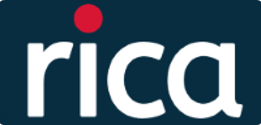
Envíos
Lista de comprobación para la preparación de envíos
Como parte del proceso de envío, los autores/as están obligados a comprobar que su envío cumpla todos los elementos que se muestran a continuación. Se devolverán a los autores/as aquellos envíos que no cumplan estas directrices.- La contribución es original e inédita y no está siendo evaluada para su publicación por otra revista.
- El archivo de envío está en formato Microsoft Word, OpenOffice o RTF.
- Donde están disponibles, se han proporcionado URL para referencias.
- El texto sigue los estándares de estilo de acuerdo con los lineamientos de la revista; Las figuras y tablas se incluyen en el texto, no al final del documento ni como anexos.
- El texto sigue los estándares de estilo y los requisitos bibliográficos descritos en Directrices para autores , en la página 'Acerca de la revista'.
- En el envio, el título, el resumen y las palabras clave deben agregarse al sistema de la revista en inglés, portugués y español, independientemente del idioma del artículo.
Comunicaciones Cortas
Short articles that clearly address the scientific method should be included in the “Short Communications” section. As an example, it can be work done in the classroom, in an extension project, or internship.
Articulos Completos
In the section "Complete Articles", the works present a more extensive review and data analysis is deeper. This section is interested in receiving monographs, dissertations and thesis, or even scientific initiation works with years of research.
Artículos de Revisión
The “Review Articles” section aims to publish works that deal with the compilation of information about a current subject in the most diverse scientific areas.
Reseña
This section will include reviews of books whose content is related to the scope of this journal: Interdisciplinarity, Education and Applied Science.
Estudios de Casos
In this section articles that describe and analyze cases/situations or present experiences from some real application in all areas of knowledge.
Special Edition - Integrated Approaches to Global Health, Societal Recovery, and
Section for articles submitted to the special edition "Integrated Approaches to Global Health, Societal Recovery, and Technological Advancements in Post Crisis Contexts".
Aviso de derechos de autor/a
Los autores conservan los derechos de autor y otorgan a la revista el derecho de primera publicación, con el trabajo licenciado simultáneamente bajo la Licencia Creative Commons CC BY 4.0, que permite compartir el trabajo con reconocimiento de autoría del trabajo y publicación inicial en esta revista.
Declaración de privacidad
Los nombres y las direcciones de correo electrónico introducidos en esta revista se usarán exclusivamente para los fines establecidos en ella y no se proporcionarán a terceros o para su uso con otros fines.
Declaración de prácticas éticas y de publicación
RICA se compromete a mantener los más altos estándares éticos para garantizar la calidad e integridad de los trabajos publicados. Así, RICA tiene los siguientes principios:
- El equipo editorial y de revisión trabaja voluntariamente para mantener la calidad de los trabajos publicados y puede, en cualquier momento, señalar irregularidades que violen los derechos de autor o presenten algún tipo de plagio, tomando las medidas oportunas.
- El equipo editorial garantiza la confidencialidad de los trabajos presentados hasta su publicación, excepto en el caso de publicaciones de artículos premiados y ediciones especiales con producciones de autores conocidos.
- El equipo de revisión se compromete a tratar el trabajo recibido para la revisión por pares como confidencial y no debe utilizar la información obtenida en este proceso para una ventaja personal y / o profesional.
- Los autores deben asegurarse de haber escrito trabajos completamente originales. Cuando se utilizan otros materiales, las fuentes deben citarse adecuadamente. Cualquier intento de plagio resultará en el rechazo del trabajo enviado o archivado si ha sido publicado y esta identificación ha ocurrido más tarde.
- Los autores no deben enviar el mismo trabajo a más de una revista. Enviar el mismo texto a más de una revista constituye un comportamiento poco ético que puede hacer inviable la publicación.
- Si se verifica el plagio después de la publicación, el autor estará sujeto a las medidas legales aplicables. El archivo de trabajo en línea se eliminará de inmediato y en su lugar se publicará una explicación del motivo de la eliminación.
La RICA sigue los lineamientos determinados por el código de conducta ética del Comité de Ética en Publicaciones (COPE). Por lo tanto, es fundamental que todas las partes involucradas (editores, autores y revisores) los adopten, con el fin de prevenir casos de comportamiento poco ético y malas prácticas en las publicaciones. RICA repudia todo tipo de plagio, falsificación de información, fabricación de resultados, autoría indebida o fantasma y cualquier otro tipo de fraude que atente contra la ética científica. Además, respaldamos las directrices para los autores determinadas por la Comisión de Integridad del Consejo Nacional de Desarrollo Científico y Tecnológico (CNPq), disponibles aquí.
Para obtener información detallada sobre las directrices sobre ética y prácticas editoriales de la RICA, acceda a la Declaración de ética y malas prácticas de publicación de la revista.




